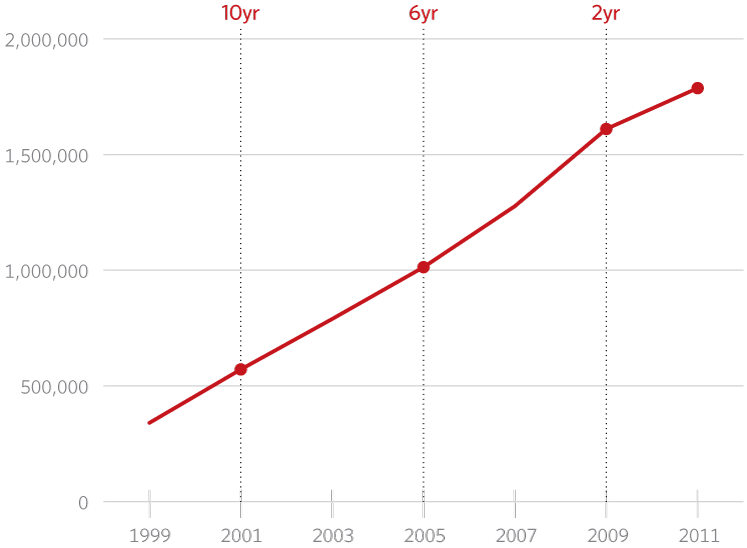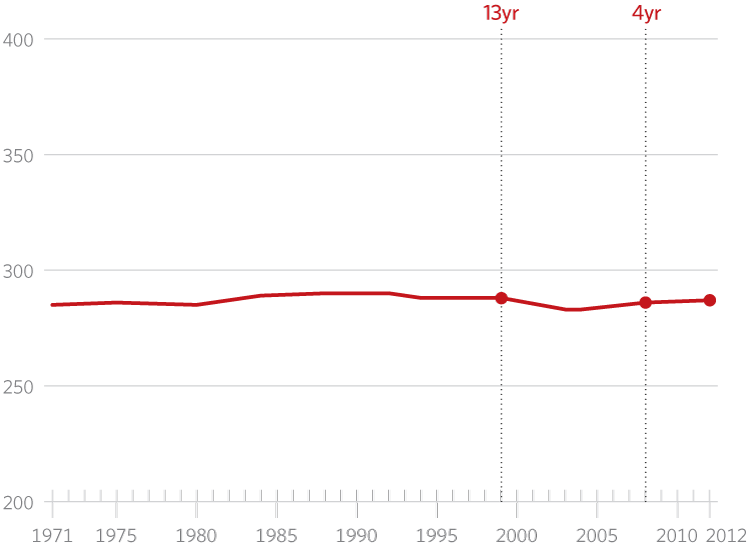The growth of educational opportunity through school choice over the last ten years suggests American education is moving in the right direction.
Last week, The Heritage Foundation’s Institute for Family, Community, and Opportunity released the first annual “Index for Culture and Opportunity,” tracking 31 leading social and economic indicators that reveal the state of America’s civil society. Each indicator is based on regularly updated national data and provides 5- and 10-year windows of reference to show whether indicators are headed down the “right track” or “wrong track.”
The research suggests many of the indicators in the Index are headed in the “wrong direction”—the marriage rate, poverty rate, fertility rate, food stamp participation and unemployment rate among them—but two of the eight measures that are improving involve expanding educational opportunity through school choice.
In the past 10 years, charter school enrollment has increased by 1,216,000 students.
Participation in private school choice options— such as vouchers, scholarship tax credits, individual tuition tax credits, and education savings accounts— has increased by 217,947 students.
“More than 300,000 children are attending private schools of their choosing thanks to options like vouchers, tax credit programs, and education savings accounts. When all school choice policy options are considered—for example, deductions for homeschooling expenses— more than one million children are benefitting from choice in education,” wrote Heritage fellow Virginia Walden Ford in a commentary to the indicator.
Currently, families in 24 states and the District of Columbia exercise private school choice. Research suggests this number will continue to expand—and grow more innovative.
For example, in 2011, Arizona became the first state to pass the most innovative educational option to date: education savings accounts. With an education savings account, parents of eligible students are able to fully customize their child’s education with 90 percent of the state allocated funds that would have followed their child to a public school. According to Heritage’s Will Skillman Fellow for Education Lindsey Lindsey Burke, in the first year of enactment 34 percent of ESA parents were fully customizing their child’s education through options such as private tutoring, private school, homeschool, curricula, therapies, and they were even able to rollover unused funds into a college savings account.
Arizona has expanded ESA eligibility every year, permitting more students the opportunity to have their educational regimen tailored to their needs. And this year, Florida became the second state to pass ESAs.
But although educational opportunity through school choice is on the rise, not all education indicators are moving in the right direction.
Despite $2 trillion dollars of federal education spending since 1970, reading proficiency among 17-year-olds has virtually stagnated. This year National Assessment for Educational Progress data reports only 38 percent of 12th grade students are proficient in reading.
The indicator for student loan debt also causes pause for concern. The average student loan debt held by graduates with loans increased by $4,612 between 2001-2011. Average student loan debt now stands at $26,500 (in 2012 dollars).
“Effective education is an important foundation for upward mobility,” wrote Burke and Stuart Butler, who is the former director of the Center for Policy Innovation at Heritage.
“Yet thousands of elementary and secondary schools across the country are underperforming to the extent that they have been deemed ‘dropout-factories.’ Meanwhile, higher education is increasingly important for economic advancement, but colleges suffer from a crisis of both quality and cost, strapping students with debt without guaranteeing they acquire the necessary skills or academic content mastery to prepare them for career success.”
The momentum behind parental empowerment through school choice contrasted with massive education spending and federal overreach into higher education demonstrates two distinct models of education in America. One model encourages opportunity by crafting educational offerings around the unique learning needs of each individual student. The other continues the last half-century of increased centralization and government spending, without meaningful results.
The education indicators in the Index for Culture and Opportunity are encouraging because, as Ford wrote, “as school choice spreads… so does hope.”

































